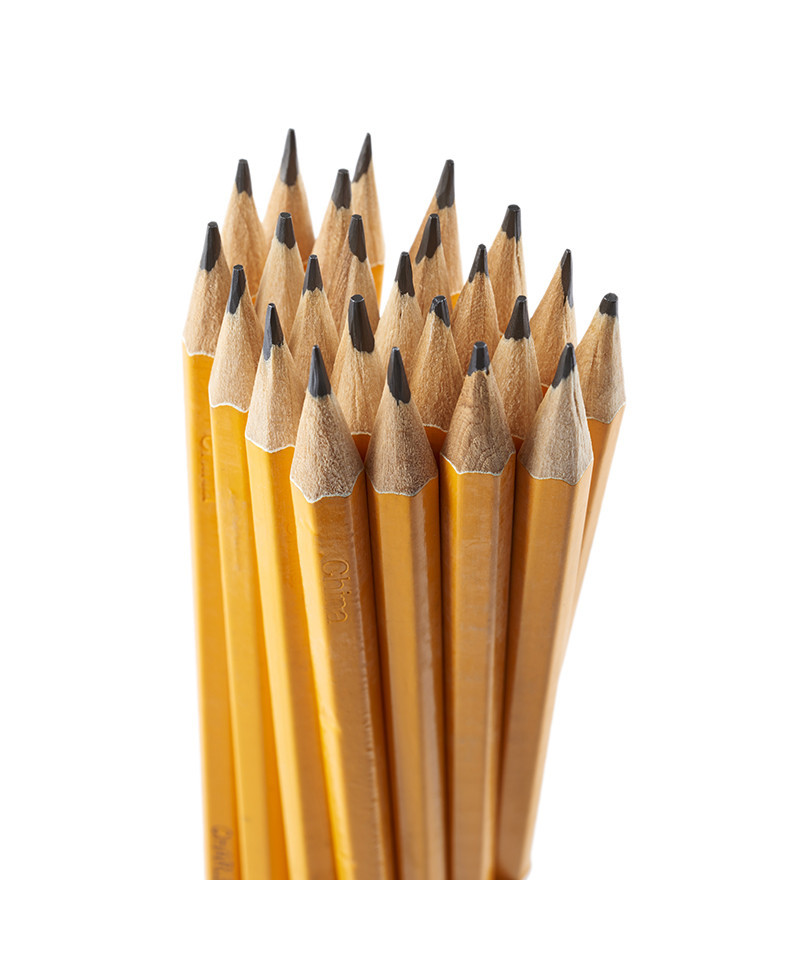
Lead pencils are a common writing tool that we use in our daily lives. We use them for writing notes, drawing, sketching, and much more. But have you ever wondered why they are called number 2 pencils? Are they really made of lead? In this article, we will explore the truth behind the number 2 pencils and whether they are actually made of lead.
What are Lead Pencils?

Lead pencils are a type of writing instrument that uses a graphite core to leave a mark on paper. The graphite core is surrounded by a wooden barrel, which is usually hexagonal in shape. The barrel is often painted yellow, but it can come in a variety of colors and designs.
Why are they called Number 2 Pencils?

The term "number 2 pencil" refers to the hardness of the graphite core. The hardness of the graphite core is determined by a numerical grading system from 1 to 4, with 1 being the softest and 4 being the hardest. Number 2 pencils have a medium hardness, which makes them ideal for everyday writing and standardized tests.
Are Lead Pencils actually made of Lead?

Contrary to popular belief, lead pencils are not made of lead. In fact, the "lead" in lead pencils is actually graphite. The term "lead" originated from the fact that early pencils were made of a soft, pliable material called lead. However, this material was eventually replaced by graphite due to health concerns.
The History of Lead Pencils

The use of graphite for writing dates back to the 16th century, but it wasn't until the late 1700s that the modern pencil was developed. The first modern pencil was created by Nicholas-Jacques Conte, a French artist and scientist. He discovered that mixing graphite powder with clay created a stronger, more durable writing material.
Types of Lead Pencils

Lead pencils come in a variety of types, including mechanical pencils, colored pencils, and graphite sticks. Mechanical pencils have a refillable lead core that can be extended or retracted, while colored pencils come in a variety of colors and are used for drawing and coloring. Graphite sticks are used for large-scale drawing and sketching.
Uses of Lead Pencils

Lead pencils have a wide range of uses, including writing, drawing, sketching, shading, and marking. They are also used for standardized tests, as they produce a consistent and easy-to-read mark on paper.
Advantages of Lead Pencils

Lead pencils have several advantages over other writing instruments. They are easy to use, produce a consistent mark, and can be easily erased. They also do not smudge or bleed through paper, making them ideal for note-taking and other types of writing.
Caring for Lead Pencils

To keep your lead pencils in good condition, it is important to store them in a dry place and avoid exposing them to extreme temperatures. You should also sharpen your pencils regularly to maintain a sharp point and prevent the graphite core from breaking.
Conclusion
Lead pencils are a versatile and reliable writing instrument that has been used for centuries. They are not made of lead, but rather graphite, and are called number 2 pencils due to their medium hardness. Whether you are taking a standardized test or simply jotting down a note, a lead pencil is always a great choice.